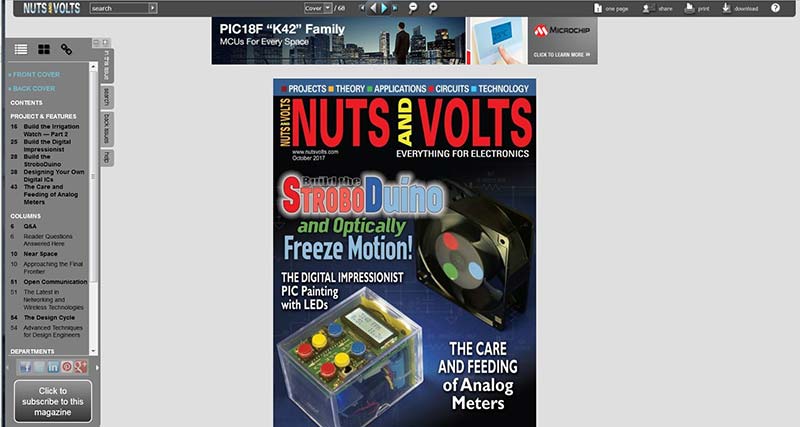Ever need negative voltage when all you can get is positive? This voltage mirror device will give you -V out when you put +V in, and works over a range of voltages without adjustment.
:::
Read This Article!
If you’re a subscriber and your subscription includes this issue of Nuts & Volts, you can read this article in our digital edition by clicking the blue icon in the upper right corner. Use the email address associated with your subscriber services account to login.

If you're a member of our Preferred Subscriber Network, not only will the magic blue icon let you read this article, but EVERY article in EVERY issue is yours to enjoy! Over a decades worth of content is stored in our digital archive!
If you’re not a subscriber, you can still view a few sample pages of our digital edition or subscribe here for full digital access and/or print delivery. Also, as you browse around our site, you will find selected articles have been posted in their entirety for you to enjoy.
Corrections
Possible Problem with Diode D1
The Schottky diode designated D1 in the Inverting DC-DC converter may cause the output voltage to vary outside the +/- 2% specified tolerance. Schottky diodes have a higher reverse-bias leakage current than do standard diodes such as a 1N4001. Since D1 is connected to a high-impedance point on CMOS op-amp IC1, any leakage current would change the set-point of the comparator.
Diode D1 was included in the design just to clamp the input to IC1 in case a circuit failure drove the output too far negative. However, such a failure is highly unlikely. So it is recommended that diode D1 not be installed when building the kit.

